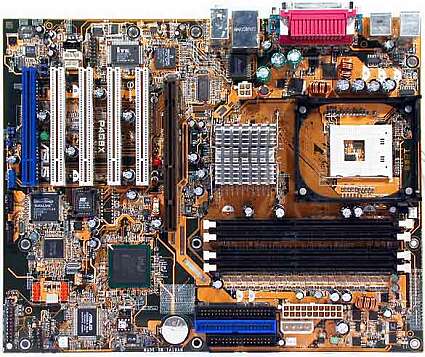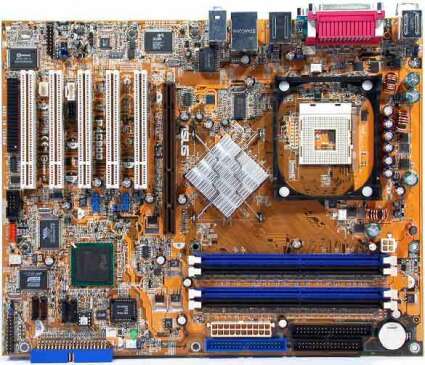Overclocking: 875 = 7205 + X
Dual Channel DDR400, Continued
The chipset of the motherboard remains cold, thermally speaking. Today, the question is whether 200 MHz is also possible with the same configuration, since the corresponding CPUs are currently available with FSB 800 (marketing clock rate "800" equals 200 MHz in reality).
Prompted by this, we conducted a test within a short period of time in which we used the good ol' Asus P4G8X. Some still use this board, which is quite attractive for friends of overclocking because it gives you a lot of leeway with the FSB clock, and last year, it already put up a tough fight against a well-configured Rambus platform with PC1066.
View of our test platform, based on the Intel 7205: the fast DDR 400 module, including AGP 8X graphics, offers features similar to those of the expensive 875 platform.
Already available last year, and offers enough power: the Asus P4G8X, for example, with Intel 7205. With the exception of CSA, the old 7205 could easily keep apace with the new high-end 875 chipset, which, after all, stems from the 7205.
Compare this to a new board (shown here: the Asus P4C800) with the Intel 875 chipset, which sells for at least $200 or more. No performance advantages can be determined.
Get Tom's Hardware's best news and in-depth reviews, straight to your inbox.
Current page: Dual Channel DDR400, Continued
Prev Page Dual Channel DDR400 Next Page Dual Channel DDR400, Continued

